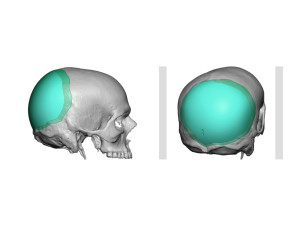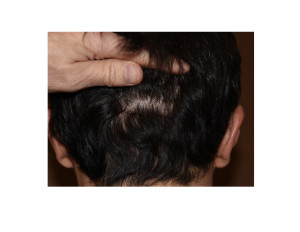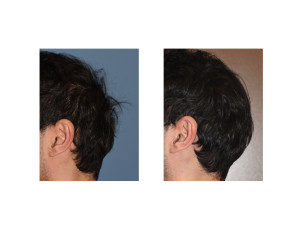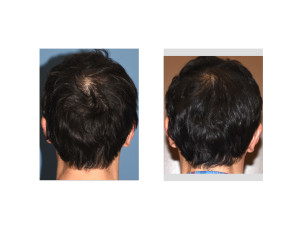Background: Deformities of the back of the head, or of the occipital skull, are not uncommon. Due to the back of the head being exposed to pressures in utero and after birth, occipital deformation is the most frequently occurring skull shape alteration. While known to occur in certain ethnic groups (e.g., Asians) more than others, it can affect any race or gender.
While some back of the skull deformities bother people even with full heads of hair, hair loss/thinning can make the skull concern more apparent. This takes on heightened significance in men who who are bald and shave their heads. Thus it should be no surprise that men make up an equal if not greater portion of patients that seek skull reshaping.
Many occipital skull deformities are marked by flattening that is often asymmetric. This is far more common than perfectly symmetric flat back of the heads. This underscores the importance of creating a custom skull occipital implant from a 3D CT scan. No intraoperative skull augmentation method can come close to the precision of 3D implant designing.

Under general anesthesia in the supine position, a 7 cm horizontal scalp incision was made low on the back of the head. Through this incision, a wide subperiosteal dissection was made that extended beyond the edges of where the implant would go. The custom occipital skull implant, after preparation by making multiple perfusion holes, was rolled and inserted. Once the implant was completely inside it was unrolled and positioned into its proper orientation as designed on the 3D CT scan. The scalp incision was closed in multiple layers with dissolveable sutures.

A custom occipital skull implant is the best method for correction of an asymmetric back of the head shape. As long as the goal is to need just enough augmentation to make the back of the head more symmetric and smoother, the overlying scalp tissue should stretch sufficiently to cover the implant without undue tension on the incision closure.
Highlights:
1) Custom skull implants have become the gold standard for correcting many types of skull shape issues.
2) Made from a 3D CT scan, the implant can be designed to match an asymmetric side of the skull to the other more normal side.
3) Because custom skull implants are flexible, particularly the thinner they are, they can be inserted through small scalp incisions.
Dr. Barry Eppley
Indianapolis, Indiana




